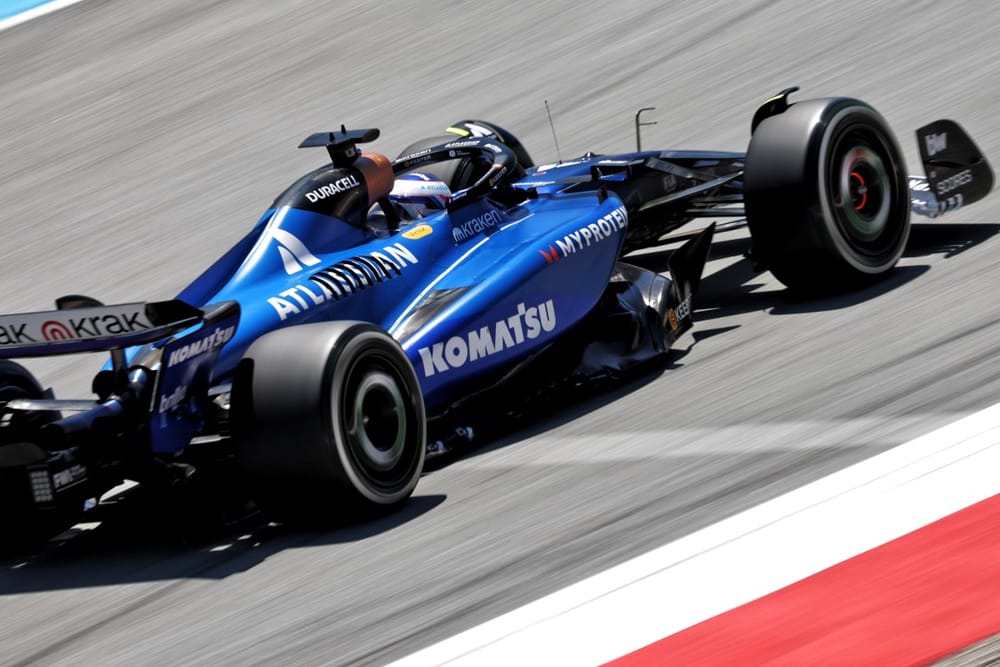Williams’s new Formula 1 recruit placing 19th on his free practice debut, almost six tenths off regular Carlos Sainz, might not seem significant - but Victor Martins’ F1 bow has been a long time coming and was more impressive than it might first appear.
Martins was a fierce title rival to current F1 championship leader Oscar Piastri in Formula Renault in 2019, returning to win that series one year later while Piastri went on to win F3 - something Martins did two years later.
He had been demoted to an affiliate Alpine driver (essentially half an F1 junior) and then repromoted when he won the F3 title, only to then split with Alpine and join Williams in March this year.
The 23-year-old has raced closely with seven of the 20 current F1 drivers in single seaters, such has been his longevity in the junior ladder, but he’s never quite found his big breakthrough despite plenty of glimpses of brilliance during his two and a bit seasons in Formula 2 so far.
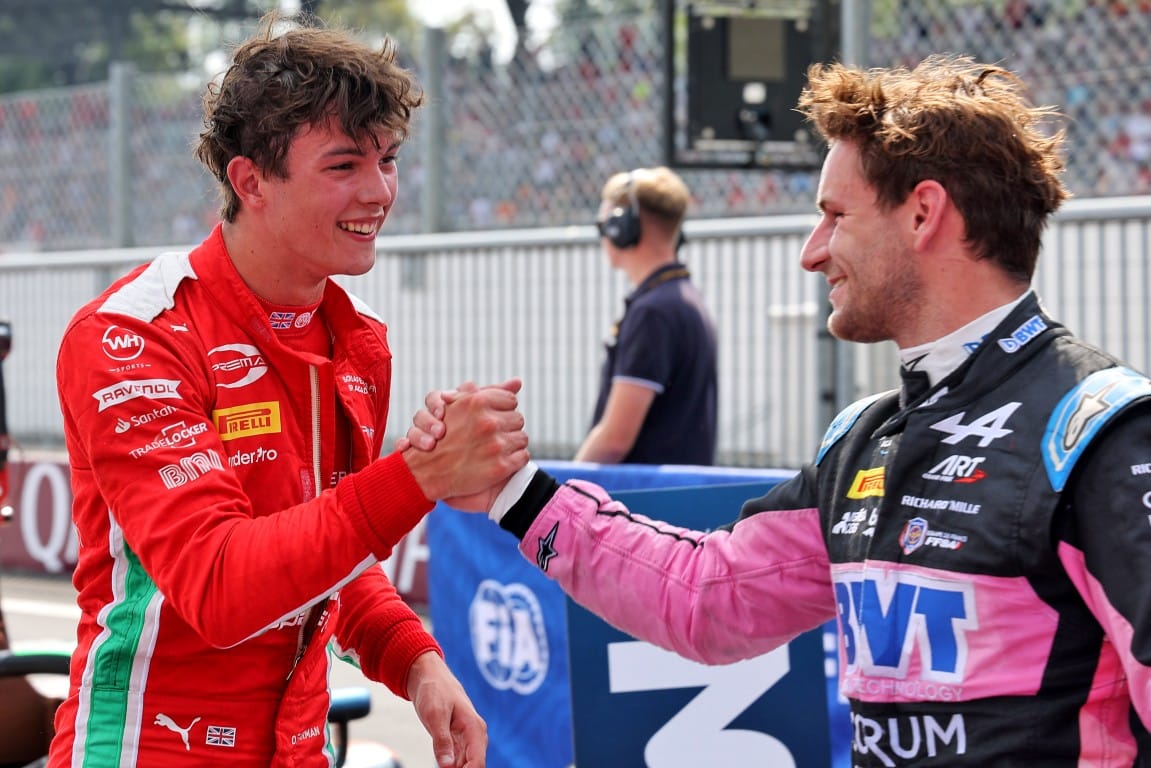
Williams has finally given him the chance Alpine never did - F1 weekend running - with first Piastri, then Jack Doohan, then Franco Colapinto surplanting him as the young Alpine driver of choice.
Martins completed Testing of Previous Cars (TPC) running with Williams at Monza last month and made his FP1 bow with Williams in Barcelona.
How his session went
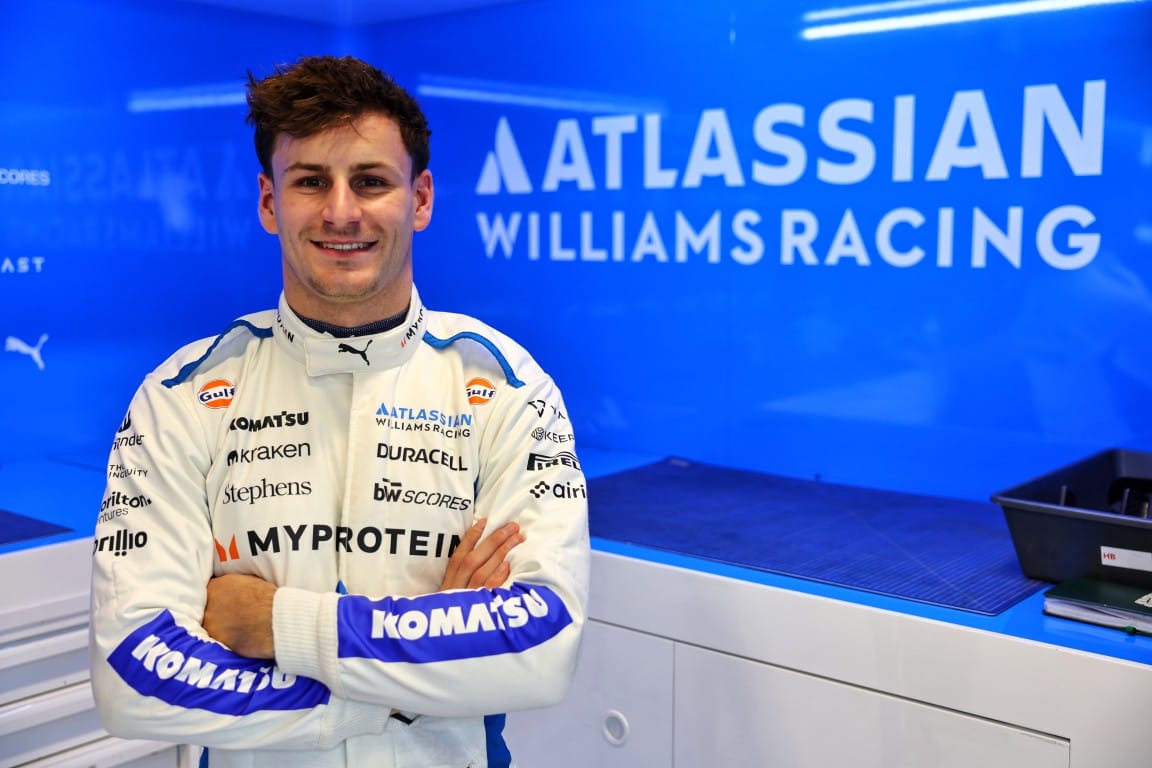
This wasn’t an easy session for Martins to make his debut, but there are very few of those in F1 now.
Practice sessions like this are the ultimate stress test of driver-engineer, so when you’ve changed one of those components (the driver in this case with Alex Albon’s race engineer James Urwin) and have limited time to complete your runplan, things can be stressful.
Martins was tasked with carrying out important aerodynamic work for Williams during FP1, with one of his medium-tyre runs purely being focussed on steering tests, where he’d steer multiple times through corners that usually require one firm motion.
That test had to be repeated just before the chequered flag, as during the initial test Martins misunderstood the instruction from his engineer and the test had to be aborted.
“Sorry for that, I think I understood something else, I thought it was the next lap,” Martins apologised over the radio.
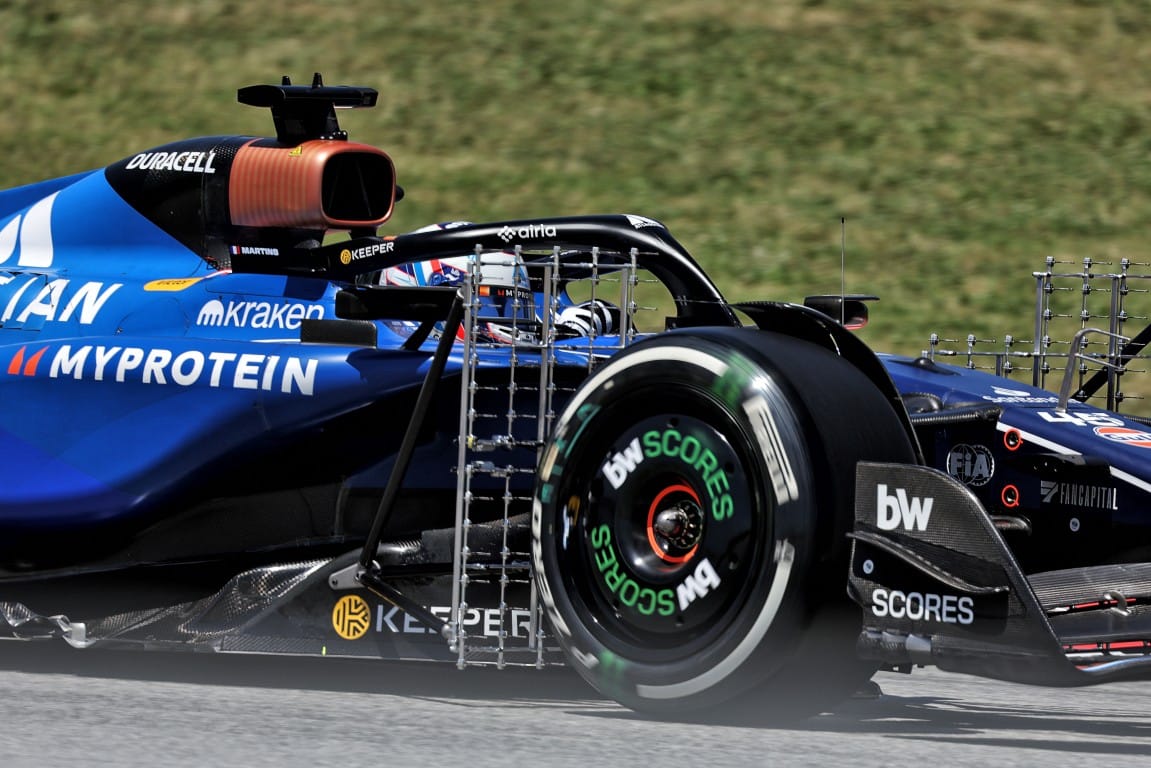
There were questions you’d expect from rookies too, like Martins needing to ask “where is the tyre delta” displayed on the steering wheel when he was told his front right tyre temperature was too low.
And there was plenty of feedback from Martins that sometimes had to be overridden so his engineer could give him important traffic or switch change information.
“I knew it was going to be tricky to manage to do the run plan, the procedures well while looking in the mirrors. Changing things on the wheel, I’m not used to do that in F2 and with all the traffic as well,” Martins said after practice.
“At one point I got surprised by one car, I wasn’t expecting him to be that fast and closing to me that fast but anyway, we were all happy.”
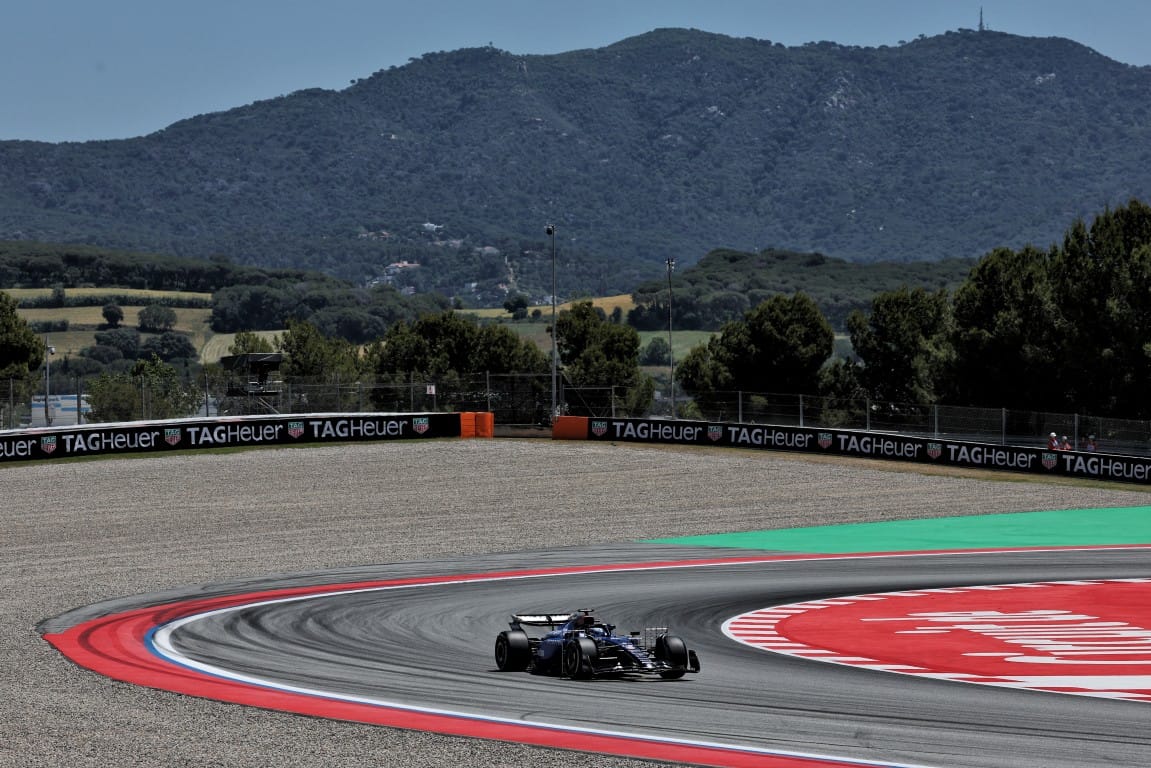
His laptime progression was strong, though. His first push lap on the hard tyres was a 1m17.928s, followed by a big improvement to 1m17.132s.
In between those laps, Martins already identified “in left corners I got a big washout, either too quick or combining [steering with braking] too much”. His engineer confirmed he was combining too much into the Turn 10 left-hander and later told him to lift less out of the high-speed Turn 9 right-hander and the final corner.
His third push lap brought him down to a 1m17.034s, which at the time was seven tenths slower than Sainz’s best effort.
Once he’d switched to mediums and aborted that initial steering test, Martins improved to a 1m15.663s, then to a 1m15.522s on his next push lap.
That left a respectable final deficit of 0.587s to Sainz, but it’s worth bearing in mind that Martins didn’t use DRS for the majority of the session while running aero tests and only completed five real push laps in the one-hour session.

Importantly, he kept it out of the wall, too. Observing trackside at Turn 3, Edd Straw noted very few differences between Martins and Sainz through that corner.
The deficit came later in the lap where Martins was leaving margin at corners that could have bitten him the worst, something team boss James Vowles appreciated.
“He did a good job, he was six tenths off Carlos, a tenth or a tenth and a half of that is in Turn 9 and the last corner, so he was being careful with the car, I like that about what he did,” Vowles said when The Race asked for his assessment.
“So to be four and a half tenths off in your first outing with us [minus the caution in Turn 9 and the last corner] is good.
“Bear in mind he’s done TPC testing and we'll do more TPC testing together, but it’s a solid start.”
Race engineer Urwin told Martins, “that was a busy one, a lot on the table to get done there, a lot to do, well done,” to which Martins thanked the team for the “unbelievable feeling” they’d given him.
The F2 complication
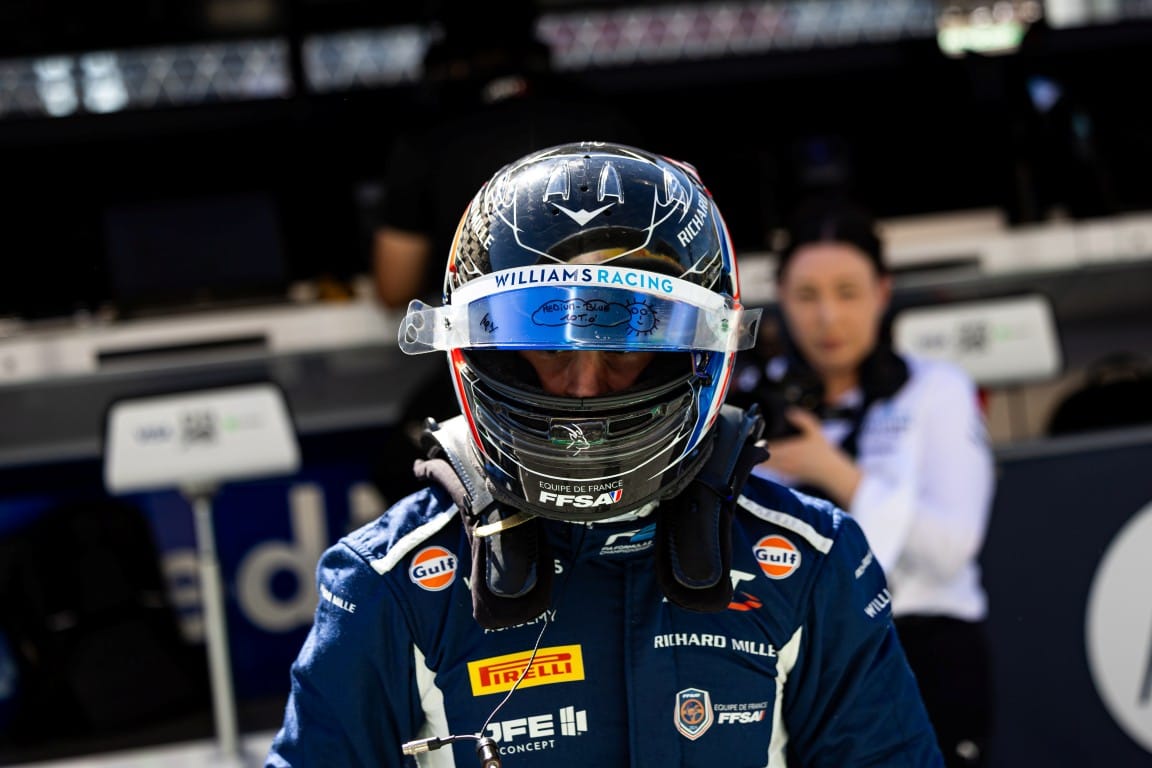
Martins isn’t the first F2 driver to find out just how tough jumping from F2 practice to F1 practice back to F2 qualifying is.
And it’s little surprise that Martins, who hadn’t qualified outside of the top three so far this season, was suddenly 15th in F2 qualifying in Barcelona.
What further complicated his F1 practice preparation was needing to see the stewards for his (innocent) role in McLaren junior Alex Dunne running into the back of his car in the pitlane in practice.
“It was a bit of a difficult situation to deal with, I was not expecting to go in the stewards’ room, neither were the engineers, a bit delayed in the briefing, but I think we did quite a bit yesterday,” Martins said.
“Thursday was quite busy, the pressure of course comes down, the doubts that you have sometimes going into the first time. You want to know everything - it felt like on Thursday I did half and half and not one proper category correctly.
“When you only have F2, I leave the track at probably 5pm and I know everything I need to know for the next day, I just knew Thursday was so busy, I knew maybe 50% of what I should have known about the F1 session and F2, but in the end the most important things I needed to know I knew before the session.”
Any F2 driver would bite the hand off an F1 team offering a practice drive even if it compromises their F2 weekend. You never know when you’ll get another chance and F1 teams themselves base it on the least useful FP1s - the race drivers know tracks like Barcelona inside-out, so can afford to skip a session.
His future
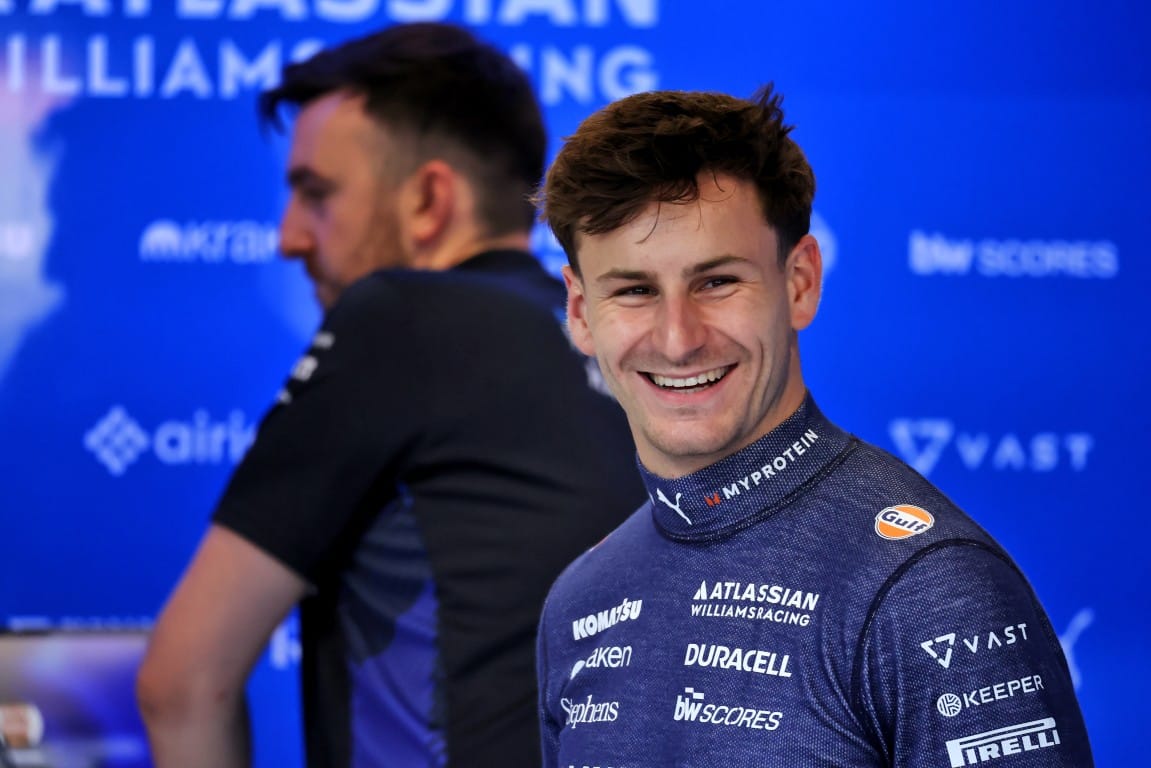
Williams’s revived driver academy has already landed Logan Sargeant and Franco Colapinto with seats, and Martins and other juniors - namely its rookie F2 points leader Luke Browning - will hope to be the next.
Williams has ambitions of having a homegrown driver in its team when it has the machinery capable of fighting for championships once more.
Of course, Williams has Albon and Sainz locked in for the foreseeable future, so it’s very unlikely there will be a vacancy there anytime soon.
There’s a very long way before Martins can get anywhere near the reputation Colapinto built up - and doing so without a surprise F1 cameo may be tricky - but if another team came calling, would Williams let Martins go like it did with Colapinto over the winter?
“It’s different in the case of Victor," said Vowles, "in as much as we have our line-up is secure for several years, but we still have openings coming in the next two years, and that’s about the time he’ll mature in his normal career.”
With Williams still needing two more rookie practice runs - Browning stepped into Sainz’s car in Bahrain - there could be further chances for Martins to impress and show Williams he’s maturing into the future F1 race driver option he’s long threatened to be.


